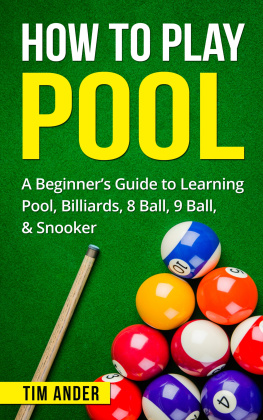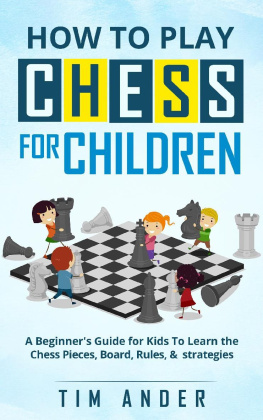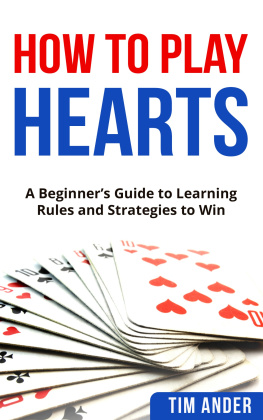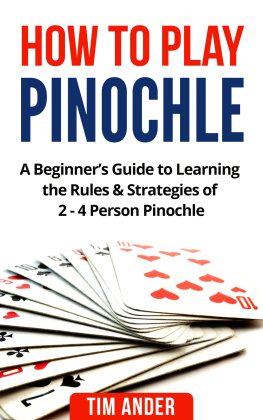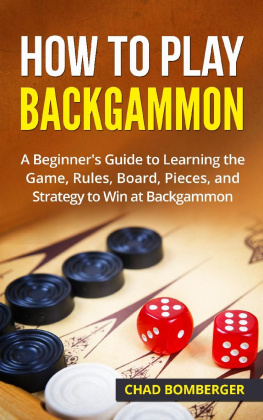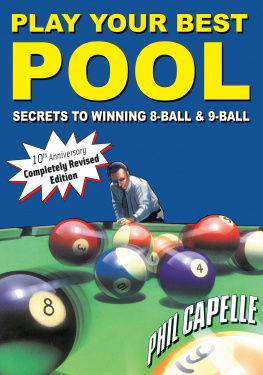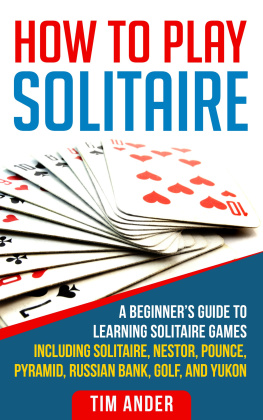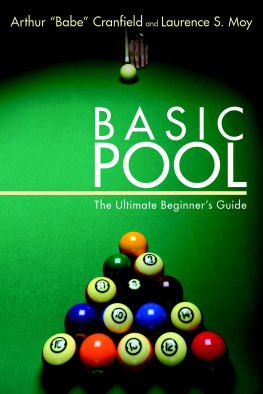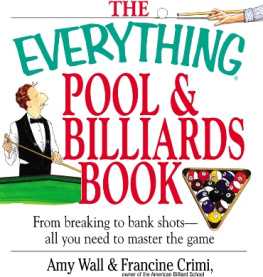HOW TO PLAY
POOL
a Guide
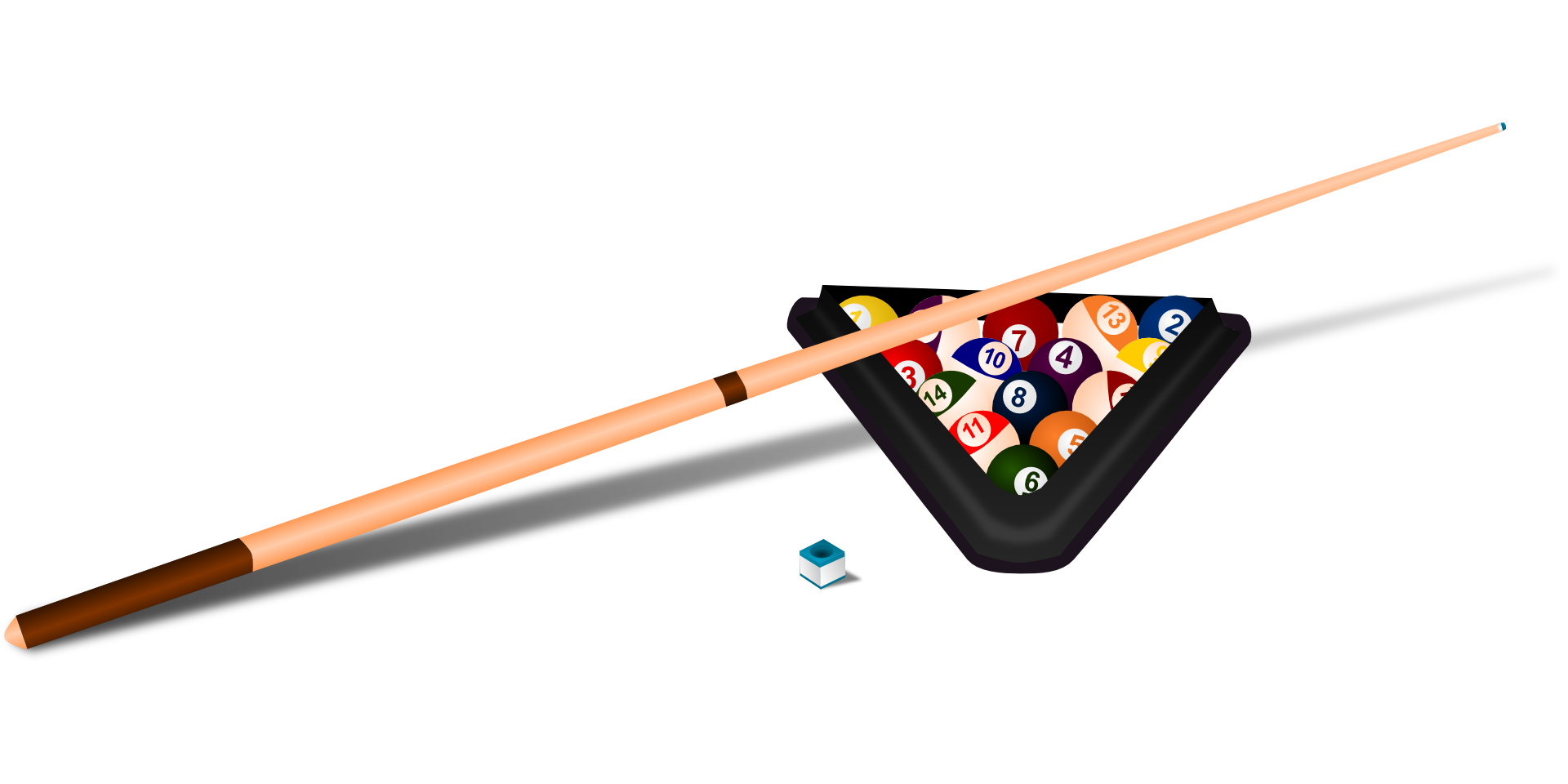
Tim Ander
Copyright 2018 by Tim Ander .
All rights reserved.
No part of this publication may be reproduced, distributed, or transmitted in any form or by any means, including photocopying, recording, or other electronic or mechanical methods, without the prior written permission of the publisher, except in the case of brief quotations embodied in critical reviews and certain other noncommercial uses permitted by copyright law.
For permission requests, please write to the publisher.
Table of Contents
Introduction
Billiards (or cue sports) is a term for a lot of different games which generally include the use of a cue stick, billiard balls, and a billiards table. The sport itself has evolved into a lot of different sports and activities with different rules and regulations and its safe to say that playing and mastering every variation of the game is fairly difficult and challenging. In order to have a better understanding of the wide variety of games included in the term billiards, there exists a division of three major types of games which are played using similar equipment:
- Pool is definitely the most famous and widely played variation of billiards and it is also known as pocket billiards in North America. Pool is played both casually and professionally since pool tables can be found both in billiards clubs and regular bars. What makes is distinct in the family of cue sports is the fact that it's played on a table with six pockets (holes) and the table is somewhat smaller than the one used for other billiards games. The decision does not stop here since there are hundreds of different pool games. The most famous ones include nine-ball, eight-ball, straight pool. Pool is the most beginner-friendly variation and the book is going to focus on this variation the most. The usual goal is to pocket all of your balls before your opponent.

Standard pool equipment
- Snooker is a completely different variation of billiards as its played on a much larger table (approximately 12 feet by 6 feet) and its played with a significantly larger amount of cue balls than pool since pool is played with 8 or 9 balls and snooker is played with 22 balls. The game consists of hitting the balls in correct order and scoring more points than your opponent. Because of its overall complexness and the amount of skill needed, snooker is a sport mostly enjoyed by professionals and there are a lot of famous tournaments.

A professional snooker match
- Carom billiards is probably the least famous type of cue sports and it has never reached the popularity of pool and billiards. Its played on a table without pockets with dimensions of 5 feet by 10 feet. Scoring points is called caroming and it includes hitting both the opponents ball and the target ball. The origin of this sport is not well-known but historians think the sport belongs to 18 th century France. The sport is rarely played casually or professionally in the Western world.

A carom billiards table with no pockets
Pool is definitely the most beginner-friendly billiards discipline and everyone looking to start playing should start with pool. Snooker is more complex and that is why it gets recognition by professionals. Snooker should also be included in the 2020 Olympic Games following its recognition by the International Olympic Committee (IOC).
Brief History
One should know that each billiards sport derived from outdoor activities which included a stick and a ball. These games are usually referred to as ground billiards because they were played on the ground and resembled golf, croquet, and modern billiards. The early beginning of billiards is usually associated with 14th and 15th century France.

Ground billiards
It was the kings of France who helped make billiards famous and who finally made way for modern-looking billiards into the life of aristocrats. Before this era, there were no tables for sports and games similar to billiards and it was Louis XI who owned the first table for billiards. Following leaders of France kept the tradition and Louis XIV made it more and more popular, creating a clear division of ground-based similar sports such as golf and croquet and table billiards.
Funny enough, carom billiards was the first cue sport which hit it big and became popular on the market. However, it reached its peak of popularity in countries outside of the Western world and its fame became to decline over the last couple of decades because of its lack of innovation. After carom billiards became popular, different obstacles and traps were used to make the game more interesting and its funny to see how holes were essentially invented as obstacles and should have been avoided during a match. However, they later became targets which led to the development of different games such as pool and its derivations and snooker.
Pool was generally a term which referred to betting and a lot of sports which were not connected to cue sports were referred to as pool sports as they involved betting. However, the term eventually became attached only to this specific type of billiards and pool reached its prime level of fame in the late 19th century or the beginning of the 20th century. Annual tournaments were held all around the world and people were going crazy about the sport but it eventually collapsed around 1950s mostly because of the World War II.
The release of The Hustler, a movie about a pool player who was portrayed by Paul Newman, is considered to be the point where pool and billiards sports started rising to fame again and its the movie we should thank for keeping the sport popular up until the current day.

Paul Newman in the movie The Hustler
Snooker developed as a billiards game in the late 19th century by certain British Army officers which came up with a game which mixed the rules of several other variations of the sports in order to come up with a sport played with 15 red balls and one black ball. However, it was Sir Neville Chamberlain who set the foundation for the game by finalizing its set of rules and regulations.
The reason why billiards sports are so popular around the world is the fact that British Army was controlling a large chunk of the colony world and they spread their ideas outside the Western world.
Equipment
Pool definitely cant be enjoyed without proper equipment and it belongs to a group of sports whose equipment cant be easily replaced by an alternative. What you need to properly enjoy a game of pool is a table, balls, and cue sticks.
Pool tables are usually smaller than snooker tables, for instance, and there are various approved dimensions. They are usually called by their length and the approved dimensions include a 9-foot table, 8.5 ft, 8 ft, and 7ft. The reason they are referred to by their length is that the length to width ratio is always 2:1. This means that the 8-foot table always has the width of 4 ft, etc.
Next page
